#Princess of the Portuguese Empire
Explore tagged Tumblr posts
Text


Princess of the Portuguese Empire, Dolls of the World, The Princess Collection. 2002 56217
#Barbie#Princess#Dolls of the world#The Princess Collection#Princess of the Portuguese Empire#2002#pink label
1 note
·
View note
Text
Timothy (c. 1844 – 3 April 2004) was a 5 kg (11 lb) Mediterranean spur-thighed tortoise, estimated to be about 160 years old at the time of her death. This made her the UK's oldest known resident. In spite of her name, Timothy was female; how to sex tortoises was not properly known in the 19th century. Timothy was named after a tortoise owned by Gilbert White.
Timothy was believed to have been born in the Mediterranean shores of the Ottoman Empire (modern-day Turkey) and was found aboard a Portuguese privateer in 1854, aged around 10, by Captain John Guy Courtenay-Everard of the Royal Navy. The tortoise served as a mascot on a series of navy vessels until 1892. She was the ship mascot of HMS Queen during the first bombardment of Sevastopol in the Crimean War (she was the last survivor of this war), then moved to HMS Princess Charlotte followed by HMS Nankin.
After her naval service, she retired to live out her life on dry land, taken in by the Earl of Devon at his home, Powderham Castle. From 1935, she lived in the castle's rose garden and was owned by Camilla Gabrielle Courtenay (1913–2010), the daughter of the 16th Earl of Devon. On her underside was etched "Where have I fallen? What have I done?", English translation of the Courtenay family motto ubi lapsus, quid feci.
529 notes
·
View notes
Photo

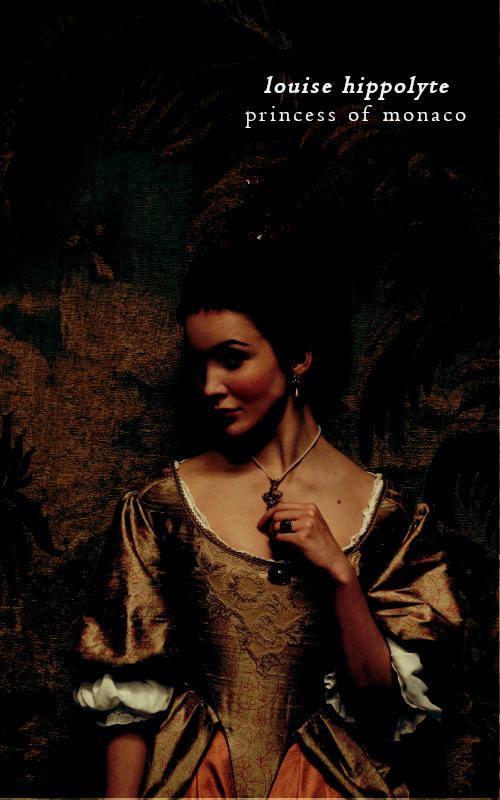
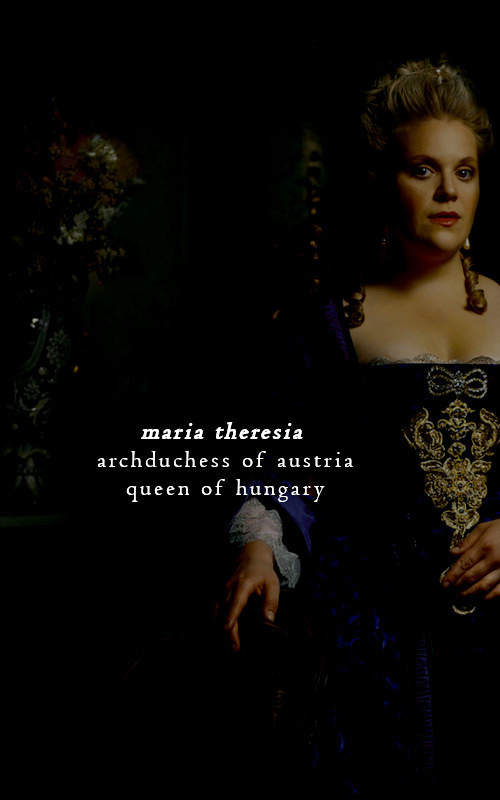
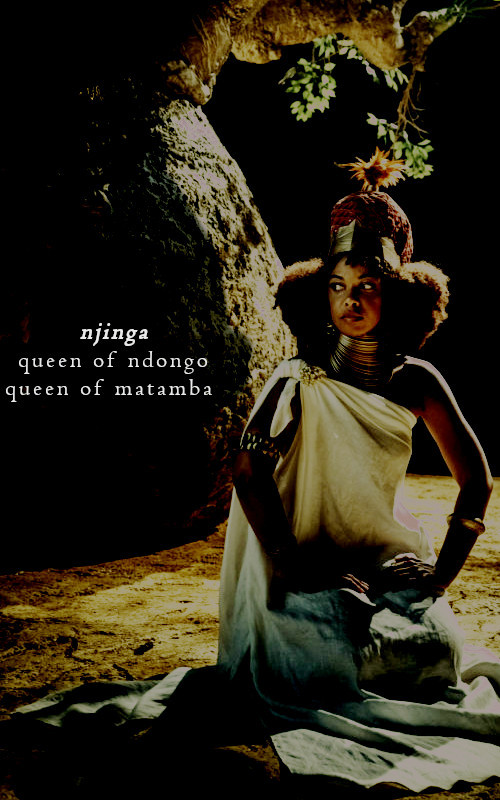
Favorite list of royal women | Regnant queens (who crowed herself queen without her husbands)
Been a queen regnant is not always easy specially when you are married but mor common than one would think. Here four of my favorite queen that were married and despite what society, and often the husband himself, thought decided that her lands by heritage or conquest were only hers to rule.
i. [1081-1116] Called The Reckless, Urraca was one of the most powerful reigning Queens of her time having inherithed the kingdom of León. Upon the death of her first husband she was convinced to marry Alfonso of Aragon the most successful warrior king of the Iberian Peninsula. It went horribly wrong. Personalities clashed and Alfonso emprisoned Urraca at one point. With Galicia rebelling and the Almoravides menace the spouses still went to war againts each other. Finally they separate and while Urraca still has a long way ahead and could keep most of her lands for herself.
ii. [1697-1731] Louise Hyppolite was at her time of birth the last Grimaldi. Monaco was under French control and it was decided that man from the French King family will be Louise’s husband and rule along with her. She was married and had to leave her land with her husband. Described as shy and submissive she did not enjoy her time at Versailles. When her father was ill she came back alone to Monaco and when he died she crowned herself Princess of Monaco with the people enthusiastic support naming her firstborn heir. There is no much her husband could do and though she ruled fr a short time she did it as the sole Princess.
iii. [1717-1780] Maria Theresia’s father Emperor Charles VI of the Roman Empire, did not prepared her to rule as he was convinced that her husband would rule for her. However, she had other plans and when her father died Maria Theresa, a 23 years old set to stablish her right as a moanrch against Prussia and most of Europe. She manage to gain ruling experience and be a monarch for 40 years. Though she deeply loved her husband she did not let him rule in her name and even refused to kneel in front of him when he was elected Holy Roman Emperor as she was of highest ruler. She was Sovereign of Hungary and Bohemia and Archduchess of Austria on her own right her husband being the consort.
iv. [1583-1663] Njinga was Queen of Ndongo after her father and brother. At the time with the Portuguese slave trade Njinga became a symbol of resistance to the Europeans. In order to gain power in the center of the region she married an Imbangala leader and learned the techniques and strategies of his people. However when she set to conquer the kingdom of Matamba and ruled there as the Queen as Matamba had tradition of female rulers. As she gained influence she was recognized as one of the great queens of the region at the time.
#historical women#women in history#maria theresia#njinga of ndongo and matamba#urraca of leon#louise hyppolite of monaco#maria theresa of austria#history
146 notes
·
View notes
Note
How... hm, how to put this... how aware were rulers of regarding other nations in the medieval and early modern periods? Like, would the ruler of Portugal know who the Timurids were? Or what was going on in Muscovy at the time? Like, how far east and south did their knowledge go before it turned into "Here Be Dragons" legend and rumor? Did they know who the Mali and Songhai were?
The answer is that it depends, largely due to differing geographies and trade patterns and time periods. For example, the ruler of Portugal might well know who the Timurids were - if it was after Vasco de Gama's "discovery" of the Cape Route to the Indian Ocean, because it's just a quick jaunt up the Indian coast to get to the Persian Gulf.

I doubt the King of Portugal would have much to do with the Tsar of Russia, but Queen Mary and Queen Elizabeth I of England definitely did - because the English government had chartered the Muscovy Company in 1555, which ferried diplomatic exchanges between Ivan IV and Elizabeth I along with the huge cargo of wool for fur and fur for wool.

And certainly the monarchs of western and central Europe would have been familiar with the kingdoms of eastern Europe, because they were all fucking inbred relations of each other.
For example, Louis the Great was King of Hungary, Croatia, and Poland, but he was also of the House of Anjou and his brother was the Duke of Calabria who married to the Queen of Naples, who also was the Countess of Provence and the Princess of Achaea. - and after his brother was assassinated, Louis invaded Naples and claimed the title of King of Naples, Sicily, and Jerusalem!

Similarly, Henry III of France was elected King of Poland and Grand Duke of Lithuania in order to keep out the Hapsburgs, and Henry's mother was Catherine de Medici. So there was probably a lot of knowledge of different countries just from family letters...

As for Mali and Songhai, the Portuguese and the Dutch "traded" extensively with West Africa in the 15th-17th centuries. So they certainly would have traded with the Mali and then the Songhai Empires. But I doubt the Tsar of Russia would have known much about them, and so it goes...

114 notes
·
View notes
Text
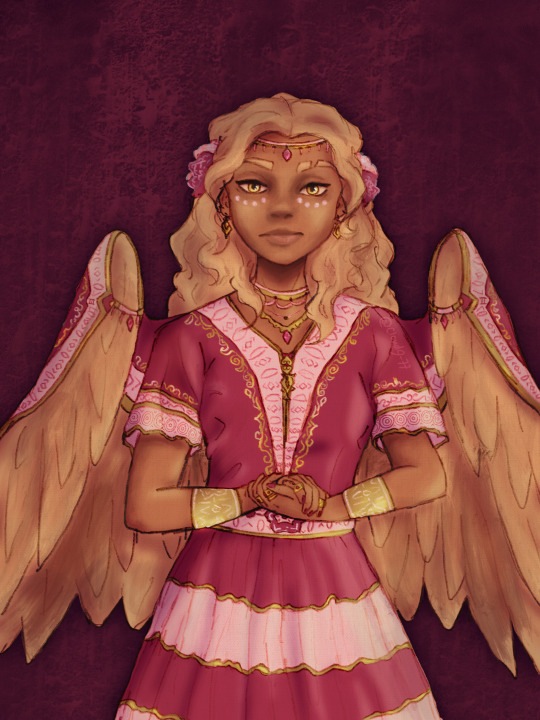
This is the Princess Dahlia of Kalmia. Chay kay cha Quyllur’p’Sonkisa Acoctili.
Lower Earth is a parallel world to our own known world, Upper Earth. As a result there are countless cultures and peoples inspired by those that truly exist in reality, and their folklore and mythology - important word there is inspired. Whilst my protagonist and her culture stems from folklore of the British Isles (because that is where I am from and so can best represent it in a culturally sensitive and relevant way), we also encounter plenty of other peoples throughout the story.
A majority of the more distant friends and fiends we encounter come from the great realm of Kalmia. Kalmia spans across the Middle Continent, stretching from an Upper Earth equivalent of west Africa (the furthest being countries such as western Nigeria and northern Cameroon) right over South/Central-America (as south as Bolivia, as north as Puerto Rico, and as west as the Galapagos). It is said that Kalmia was once two great empires, ruled by the King of the Sands (the east) and the King of the Mountains (the west). Their union formed a realm which in modern day is called the Kingdom of Kalmia. Their law states that only the original Kings have the right to rule this empire, but that they reincarnate down the generations of their family.
Depicted, as said before, is Dahlia. She is supposedly the reincarnation of the King of the Sands. Everyone knows that reincarnation, whilst maybe possible, does not work in the way the royal family say it does, and Dahila is just a descendent of monarchs. But tradition dictates she will be the future ruler of Kalmia. If her furious people don’t kill her first.
Above, I also introduced Dahlia in Eremi, one of the many native languages of Kalmia, and the one most frequently used. Eremi is a fictional language I invented, and has roots in a number of American languages, from Spanish and Portuguese, to Quechuan, Aymara and Nahuatl. Inspired by quipu recording on string, Eremi script is written in long lines, with many letters being 2D representations of physical knots.
#lower earth#original story#the other earth#digital art#fantasy#original character#winged person#fictional language#art#my art#digital artwork#procreate
13 notes
·
View notes
Text
Find out about the 'Carrancas Revolt,' the largest slave rebellion in Brazil's southeast region
Betrayal, fake news, uprising, and deaths make up the bloody plot of enslaved people fighting for freedom

Fifty-five years before May 13, 1888, went down in history as the day Princess Isabel formally signed the abolition of slavery (making Brazil the last Latin American country to do so), another episode would mark the date as a day that shook the slave structure of what was, then, an empire. The Carrancas Revolt was the largest and bloodiest slave rebellion in Brazil’s southeast region.
The episode “was unique because the slaves' confrontation targeted the manorial family,” says Marcos Ferreira de Andrade, a professor at the Federal University of São João del-Rei (UFSJ, in Portuguese) and a historian who has been researching the subject for three decades. The revolt was also the one that carried the largest collective sentence in the history of Brazilian slavery.
Continue reading.
#brazil#history#antiracism#brazilian politics#politics#mod nise da silveira#image description in alt
13 notes
·
View notes
Text

Albert Gregorius - Portrait of King Joao VI - 1826
Dom John VI (Portuguese: João VI; 13 May 1767 – 10 March 1826), nicknamed "the Clement", was King of the United Kingdom of Portugal, Brazil and the Algarves from 1816 to 1825. Although the United Kingdom of Portugal ceased to exist de facto beginning in 1822, he remained its monarch de jure between 1822 and 1825. After the recognition of the independence of Brazil under the Treaty of Rio de Janeiro of 1825, he continued as King of Portugal until his death in 1826. Under the same treaty, he also became titular Emperor of Brazil for life, while his son, Emperor Pedro I, was both de facto and de jure the monarch of the newly independent country.
John VI was born in Lisbon in 1767 during the reign of his maternal grandfather, King Dom Joseph I of Portugal. He was the second son of the Princess of Brazil and Infante Peter of Portugal, who later became Queen Dona Maria I and King Dom Peter III. John became heir to the throne when his older brother, Prince José, died of smallpox in 1788 at the age of 27. Before his accession to the Portuguese throne, John bore the titles Duke of Braganza, Duke of Beja, and Prince of Brazil. From 1799, he served as prince regent due to the mental illness of his mother. In 1816, he succeeded his mother as monarch of the Portuguese Empire, with no real change in his authority, since he already possessed absolute powers as regent.
One of the last representatives of absolute monarchy in Europe, John VI lived during a turbulent period; his reign never saw a lasting peace. Throughout his period of rule, major powers, such as Spain, France and Great Britain, continually intervened in Portuguese affairs. Forced to flee across the Atlantic Ocean to Brazil when troops of the Emperor Napoleon I invaded Portugal, he found himself faced there with liberal revolts; he was compelled to return to Europe amid new conflicts. His marriage was no less conflictual, as his wife Carlota Joaquina of Spain repeatedly conspired against her husband in favor of personal interests or those of her native Spain.
John lost Brazil when his son Pedro declared independence, and his other son Miguel (later Miguel I of Portugal) led a rebellion that sought to depose him. According to recent scholarly research, his death may well have been caused by arsenic poisoning. Notwithstanding these tribulations John left a lasting mark, especially in Brazil, where he helped to create numerous institutions and services that laid a foundation for national autonomy, and many historians consider him to be a true mastermind of the modern Brazilian state. John's contemporaries viewed him as a kind and benevolent king, although later generations of Portuguese and Brazilians have made him the subject of frequent caricature.
Albert Jacob Frans Gregorius, or Albert Jacques François Grégorius (26 October 1774, Bruges - 25 February 1853, Bruges) was a Flemish-Belgian portrait painter and Director of the art academy in Bruges.
16 notes
·
View notes
Text

Eleanor of Portugal, Holy Roman Roman Empress, Queen of the Romans
Artist: Hans Burgkmair the Elder (German, 1473–1531)
Date: After 1648
Medium: Oil on Panel
Collection: Kunsthistorisches Museum, Vienna, Austria
Eleanor of Portugal (18 September 1434 – 3 September 1467) was Empress of the Holy Roman Empire. A Portuguese infanta (princess), daughter of King Edward of Portugal and his wife Eleanor of Aragon, she was the consort of Holy Roman Emperor Frederick III and the mother of Holy Roman Emperor Maximilian I.
#portrait#eleanor of portugal#holy roman empire#empress#hans burgkmair the elder#german painter#17th century painting#oil on panel#costume#crown#flowers#book#portuguese nobility
2 notes
·
View notes
Text

The Tablet
The Death of Queen Maria Pia
Sunday, July 9, 1911
The curtain went down this week on another act of the Portuguese tragedy when Queen Maria Pia died in the Castle of Stupinigi. The news came as a great surprise to the public of Rome, following as it did within ten days of the death of Queen Maria Pia's sister, the Princess Clotilde, and coming so suddenly that the people generally were unaware that the Queen was seriously ill. June 4, last saw what was meant to be the apotheosis in Rome of Victor Emmanuel when his monument was inaugurated in the new Foro Italico, and that event throws inevitably into strong relief the hard destiny that has pursued the members of his own family. Just eleven years ago his son and successor, King Humbert I, was assassinated by an anarchist at Monza; one of his daughters, after witnessing the murder of her son and grandson in the streets of Lisbon, and earning the title of the Niobe of the House of Savoy, returned to die in exile in her own country; another, who was to have perpetuated the Napoleonic dynasty, saw the French Empire go to pieces under her eyes, and also returned home to live in solitude for the rest of her days.
Queen Maria Pia was the god daughter of Pius IX, and that Pontiff had always shown a deep interest in her career, even when it came to be generally believed that her influence in Portugal was exercised in favor of the enemies of religion. Last November, on returning to Italy, she gave an interview to the Tribuna of Rome in which, speaking of clericalism and anti-clericalism, she was reported to have said: ��I do not trouble myself about priests; I do not go to Mass; I do not speak of religion, and I do not like people to speak to me of it. What more can people want?” There is every reason to believe when the unhappy Queen uttered these words her reason had been impaired by the terrible events through which she had passed, but it is painful to have to add that though a priest had been sent for when her last illness took a really serious turn, and though he was kept waiting for hours in an antechamber, he was not called to administer the consolations of religion until the royal patient lost consciousness and was in her agony – thanks to the orders of the doctors.
3 notes
·
View notes
Text

Princesses Of The World: Princess Of The Portuguese Empire - 2002
2 notes
·
View notes
Text
9 People to Get to Know Better
Tagged by the always lovely @lordbhreanna.
1. Three ships: In general, you can just say the word 'partners' and my ears will perk up like a German shepherd who's just heard a slice of American cheese crinkle open, but here are three that my AO3 history says I've read in the past six months.
(Answers below the cut because this got long).
Jyn Erso/Cassian Andor (Star Wars): War refugees finding purpose in self-sacrifice to higher ideals. Brief comfort in each other while facing the horrors. Reading into the unsaid. This one is funny because it's had a lot of longevity for me although it's never lived in the hyperfixation category. The only time I like Star Wars is when it leaves the Jedi hocus-pocus and nostalgia references behind, which means Rogue One and Andor are my personal pinnacle of SW.
Simon "Ghost" Riley/John "Soap" MacTavish (COD): Similar to above, although the military propaganda bois here have less nobility in their cause. You know, it's that— “You want to be brothers-in-arms, to have him to yourself […] to be shipwrecked together, [to] perform valiant deeds to earn his admiration, to save him from certain death, to die for him — to die in his arms, like a Spartan, kissed once on the lips […] or just run his errands in the meanwhile. You want him to know what cannot be spoken, and to make the perfect reply, in the same language.” (Stoppard, The Invention of Love) Safe to say, my definition of romance includes camaraderie, devotion, banter, and gritted teeth. Also, the pro of one-dimensional video game characters is that fic writers can fill in the blanks with whatever they want, and this ship has some crazy-talented authors who flesh them out excessively well.
Peter Parker/Wade Wilson (Marvel Comics/Sony): This is my lazily-popping-Ritz crackers-into-my-mouth ship, although I'm very fussy with which fics I read from it. It's wild and irreverent and dysfunctional, but the heart wants what it wants, and sometimes, it wants the sassy vigilante who's experienced a lifetime of grief to get caught in tête-à-têtes with an unfiltered mercenary who can't die.
2. First ever ship: Probably Zelda/Link (Legend of Zelda). Ocarina of Time told me to go rescue the princess, and my kid-self went, "Yeah, let's go get my girl. We're in love, bb."
3. Last song: Vampire Empire by Big Thief.
4. Last film: Poor Things. A willful and visually extravagant satire that made me cry once, flinch constantly, and laugh scornfully throughout. It fearlessly addressed the many ways men attempt to control women in general and their sexuality in particular. It felt like watching a novel, which is difficult to do, and the triumphant ending was a nice reward.
5. Currently reading: The Self Under Siege by Firestone, Firestone, and Catlett and Exhalation by Ted Chiang. Both are excellent and have tight, elegant writing styles that uphold their even better— although very different—content. I picked up This is How You Lose the Time War by El-Mohtar and Gladstone from the library recently, too. Why yes, that is too many books to be reading at once, thanks for noticing.
6. Currently watching: Nothing at the moment. The last thing I watched was season two of The Bear.
7. Currently consuming: Black coffee.
8. Currently craving: BBQ pork buns and guava curd doughnuts from the long-closed Asian-Portuguese fusion bakery that used to be a couple of blocks from me. RIP RIP RIP. Craving never to be slaked.
Tagging: @her-satanic-majesty @primewritessmut @periodically-puzzled @elenafisher-wong and, of course, anyone who wants to participate and make it nine for me. Tell me what you're into these days.
3 notes
·
View notes
Text
🌊Ruby Gillman, The Teenage Kraken 🌊
Shelly-Ann D. {Darleene} Ezmeralda Armourel-Meranda Barracudon
"My mother's soul showed me and enlightened me that's mermaids are the guardians, the protectors and the guides of the titanic ocean as they're becoming intellectual women and good creatures without a black heart in them in one of my dreams. Those who're associated with floods, storms, shipwrecks, and drownings in their age-old histories, and includes one of my long-lived ancestors... Crown Empress Oshearne Mermanda.... the daughter and the youth of Atargatis, their gifted and great goddess."




"Shelly-Ann otherwise known as "Shelly"/"Ann"/or "Esmeralda"/or "Esme", her middle name, is a 16 y/o college girl & adolescent of "Coral Seacoast University", and a old friend & best friend from childhood of Ruby Gillman."
"A confident teenager who is determined to discover of her family's aforementioned secrets which she's happen to be a not only mermaid but a crowned head of the mermaids' decent tribe."
"Adopted by "Gal Barracudon", the devoted and good father who is full-blooded kraken along with his decent family members those who're dwelled in "The Ocean City Shore" and includes "Shar Barracudon" alternatively known as Shelly-Ann's likely adopted-grandfather."
"See her adopted kraken father as uncle figure and second father to her as she's calls him "Treasure Papa"/"Anchor"."
"She's Demigirl/Bisexual, and pronouns She/Her & They/Them/Their."
"They're and her gigantic family dwelled at The Ocean City Shore & "The Enchanted Coastline" next to her biological father's lighthouse, golden pond and harbor from his childhood, "New Wave Harbor" and "High Tide Harbor Light"."



"Shelly is a smoothie and real charmer with alike personalities of Princess Ariel & Esmeralda. She's a bright and kindhearted teenager with strong passions for adventure and exploration. Curious, spunky & adventurous spirit, and strong-willed, independent, headstrong, and plucky young girl with a good heart of gold like Ariel but also, they shown to be verbally powerful, streetwise, cunning, positive, moral, and intelligent like Esmeralda and Shelly's is also have ultimately a kind, loving selfless soul underneath with benevolent and caring personality as well."
"Quarter of Greece/Celtic from both of the side of her ancestry from both of their big folks but however, from her mother's side of her enormous family and her ancestors were French, Hawaiian, Mauritian-Creole & Haitian-Creole, and as for her father's, his side of his overgrown family and his ancestry were Australian, Caribbean, and Spanish & Portuguese."
"Her auburn ombre hair have pastel light blue and pastel teal highlights/ombre."



"Also have same personalities and characters of Anne Boonchuy & Rikki Chadwick."
"She's treated Ruby Gillman like a great sister to her as both of them were very dear best friends since childhood before she's move away to another town."
"A crown princess and young blue-blooded heiress of her noble grandparents' immeasurable empire of the enormous depths and titanic ocean, "Domian of The Ethereal Waves", the important colony and the considerable & greater community of full of the merfolks, water spirits and mermaids who've depart from their previous clan for moral reasons and lead by adventurers, pirates & all-powerful and full witches of the great sea, "The Moon Siren Wives", "The Merpeople Buccaneers", "The Daughters of the Sea", "The Raiders of the Promised Treasure", "The Moon Temple Sisters", "The Rovers of the Hidden Monster", "The Corsairs of the Cursed Doubloon", "The South Sea Sailors" & "The Rovers of the North Sea", "The Buccaneers of the Lost Kraken", "The Pirates of the Seven Shores" and "The Magic Water Warriors"."
"Got a part-time employment at "Underwater Park" & "Splashventures!"."
"Wears her deceased mother's blessed and good charms, "The Mermaid's Ocean Memorial", and "The Serene Tear Necklace". The Serene Tear Necklace glowing in the dark of the deeps when she's in the bottom of the sea."



"She's the captain of the group of seaside female furies, "The Siren's Song"."
"She's have gifted and imperial powers, and important forces from her mother's pure ancestors and her grandparents' as it's have same ability from Percy Jackson, H2O: Just Add Water, Mako: Island of Secrets and H2O: Mermaid Adventures."
"One of her great aunts, "Aunt Margo Meranda" & "Aunt Amber Meranda" owns a jewelry dealer's store, "The Treasure Trove". Shelly always collects goods, and outdated charms & fine and antiquated jewelries for her twin aunts when she's in bottom of the sea or treasure hunting in one of the beaches and includes low-priced ones before she's gone meet them and get to know them."


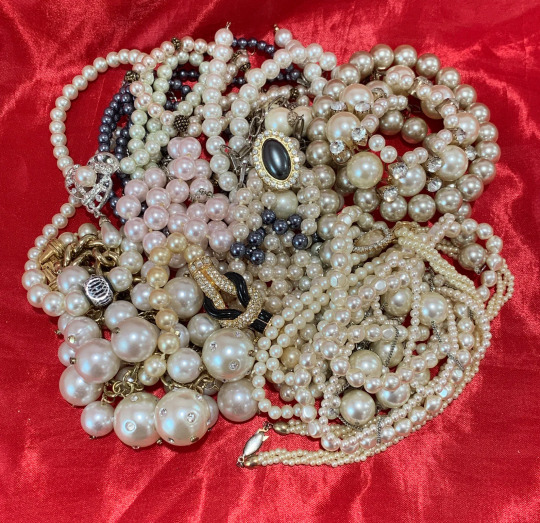
"When she's in the bottom of the sea, mermaid form and hairstyle of hers is inspired by Bloom's Mermaidix Form but however her crop-top and her appearing looks fused together and few of the accessories of hers were changed and also fused with these."









"Her adopted decent family's cares about and loves her dearly as her adopted mother, "Rilletta Barracudon", was strongly supported to her family and her adopted daughter as she was great support and glad about her husband adopting Shelly-Ann since she was a little girl."
"The roller-skating rink queen & the ringleader of "The Sadistic Seaside Sirens"."
Ruby Gillman belongs to Dreamworks Ruby Gillman the Teenage Kraken
Shelly-Ann Armourel-Meranda Barracudon belongs to @gloomycherub-mysterious/@sullenwriter-log/@glazedwriter-mystery0014
#ruby gillman teenage kraken#ruby gillman#my oc babies#my ocs#my oc#my oc stuff#my ocs are my children#my stuffs#my stuff#mermaid oc
2 notes
·
View notes
Photo










Made in 2019
If you’ve seen this anywhere else, I posted it back on my deviantArt when it was made.
Mario girls cosplaying as characters from the Barbie franchise
1. Princess of Ancient Greece - requested by roseprincessmitia
2. Princess of Cambodia - requested by roseprincessmitia
3. Princess of Japan - requested by roseprincessmitia
4. Princess of Portuguese Empire - requested by roseprincessmitia
5. Princess of the Korean Court - requested by roseprincessmitia
6. Princess of England - requested by roseprincessmitia
7. Princess of Holland - requested by roseprincessmitia
8. Princess of India - requested by roseprincessmitia
9. Princess of Pacific Islands - requested by roseprincessmitia
10. Princess of South Africa - requested by roseprincessmitia
3 notes
·
View notes
Note
"well, Brazil. In some twenty or thirty years?" Sorry I'm really stupid and know nothing of history, but who married in whom in Brazil? And Brazil wasn't a colony?
Don't worry, the way they teach story for us is confusing, and if you are brazilian or portuguese I don't think they would teach about this at all.
Short answear: Brazil went from colony to united kingdom to empire to republic in the span of 74 years.
Long answear: Portugal refused to join the continental blockade that Napoleon imposed on England. To escape the invasion of Napoleonic troops, the prince-regent Dom Pedro VI transferred the seat of the court to Brazil, then a colony, and the royal family and the court fled en masse.
The troops were expelled from Portugal by the British just under a year later, but the court remained in Brazil.
At the end of the war, in 1815, Brazil ceased to be a colony when the United Kingdom of Portugal, Brazil and the Algarves was created, so that Dom João could have his autority recognized without having to return to Europe.
Five years later Dom João, now king, returned to Portugal on account of the Liberal Revolution of Porto (I'm not sure what it's called in English); in short, they wanted the royal family to return and for Brazil to become a colony again, which would benefit Portuguese merchants.
The son and heir of Dom João, Dom Pedro*, remained in Brazil and allied with the agrarian elites here, who feared precisely the changes that the Portuguese elite were asking for.
The political scene was tense, divided into two parties, and this culminated in the declaration of independence in 1822, when Brazil became an empire, with Dom Pedro as emperor.
With Dom João's death, Dom Pedro I abdicated and returned to Portugal to reclaim the Portuguese throne, being succeeded in Brazil by his 5 years old son, Dom Pedro II, who took the throne aged 14 after a regency period.
He would have been succeeded by his eldest daughter, Princess Isabel, but the republic was declared in 1889 while he was still alive.
Regarding marriages:
Dom João married the spanish princess Carlota Joaquina de Bourbon.
Dom Pedro I married the archduchess Maria Leopoldina da Áustria (Marie Antoinette's niece!) and Amélia de Leuchtenberg, a franco-bavarian princess.
Dom Pedro II married the princess Teresa Cristina das Duas Sicílias (a kingdom comprising Sicily and Naples).
Princess Isabel married Gaston de Orléans, Count d'Eu, a french prince.
I hope this is not too long or confusing, I tried to get all the necessary info to explain why and how this anomaly happened.
*He was Dom Pedro IV in Portugal and Dom Pedro I in Brazil.
1 note
·
View note
Photo

Title: The Stars Undying (Empire Without End #1) Author: Emery Robin Genre/s: science fiction Content/Trigger Warning/s: blood, gore, violence Summary (from publisher’s website): Princess Altagracia has lost everything. After a bloody civil war, her twin sister has claimed both the crown of their planet, Szayet, and the Pearl of its prophecy: a computer that contains the immortal soul of Szayet’s god. So when the interstellar Empire of Ceiao turns its conquering eye toward Szayet, Gracia sees an opportunity. To regain her planet, Gracia places herself in the hands of the empire and its dangerous commander, Matheus Ceirran. But winning over Matheus, to say nothing of his mercurial and compelling captain Anita, is no easy feat. And in trying to secure her planet’s sovereignty and future, Gracia will find herself torn between Matheus’s ambitions, Anita’s unpredictable desires, and the demands of the Pearl that whispers in her ear. For Szayet’s sake and her own, she will need to become more than a princess with a silver tongue. She will have to become a queen as history has never seen before. Buy Here: https://bookshop.org/p/books/the-stars-undying-emery-robin/18255504 Spoiler-Free Review: My interest in Cleopatra is generally peripheral to my interest in all things Ancient Egyptian - an interest that waned when I learned about more ancient queens like Hatshepsut. Still, Cleopatra (the VII, as there were other Cleopatras before her) is probably the most famous ancient Egyptian queen, especially when you’re talking about mainstream pop culture. Which means, of course, I had to check this book out, not least because it promised to be retelling of the story of Cleopatra, Caesar, and Antony but set against a space opera backdrop. And it certainly delivered on that part - but not quite in the way I hoped. See, I think this novel hews just a little TOO close to history for my liking. It TRIES to get away with it, but when your space Caesar is named “Ceirran” and your space Antony is named “Anita” or “Ana” (depends) and your space Cleopatra has the epithet “Patramata” and your space Octavian is Otávio, well-- You see what I mean? And it’s not just the names: it’s the worldbuilding too. Szayet does not sound like Egypt, but it sure is described as a kind of inverse Egypt where there is too much water instead of too little. Ceiao does not sound like Rome, but it certainly is described that way, with all the names switched out for Spanish- and Portuguese-esque sounding names and terms. Madinabia sounds adjacent to Britannia, and the description of the people there certainly aligns with the Britons the Romans encountered when Caesar (Ceirran?) went a-conquering. And all this before pointing out that, as a retelling, the beats of the plot very, VERY closely align with actual history. What this means is that it was easy to get pulled out of immersion while I was reading this novel, because there would be moments where I would recognize this character or that location and align it with the historical equivalent. I couldn’t really sink into this world the author was weaving (and it really is quite a fantastic world!) because I’d read about a character and suddenly think “Oh hey, this is Cicero” and I’d be pulled out of the story yet again. The recognition’s supposed to be part of the fun of reading these sorts of stories, but it’s fun only insofar as it lets me stay IN the world of the story and not constantly pulling me out of it. Makes me wonder if this wouldn’t have been better as a straight-up historical novel, but then maybe it wouldn’t have stood out from the herd of other historical novels set in the same time period and around the same characters? That being said, this story’s got its good qualities too. The prose is really very lovely, and really is what kept me reading to the end. There’s also a lot of clever worldbuilding going on in there too, despite it hewing too closely to actual history as I said earlier, and I rather wish the author had done something else with the ideas and not used them in this retelling. The themes are also intriguing: questions of power and empire are of course very prominent, but there are also questions around immortality and godhood that got brought up. All those themes were touched upon, but further exploration will have to come in the second book. So overall, this wasn’t an entirely bad read! I just think that it could’ve been better if it hadn’t stuck as close as it did to the source material, as it were. May get the second book when it comes out, just to see if this’ll end the way I think it will based on how the actual history went. Rating: two large pearls and one small pearl (two and a half stars)
#book review#book reviews#science fiction#scifi#sff#the stars undying#empire without end series#emery robin#books
1 note
·
View note
Text
Events 5.20 (before 1900)
325 – The First Council of Nicaea is formally opened, starting the first ecumenical council of the Christian Church. 491 – Empress Ariadne marries Anastasius I. The widowed Augusta is able to choose her successor for the Byzantine throne, after Zeno (late emperor) dies of dysentery. 685 – The Battle of Dun Nechtain is fought between a Pictish army under King Bridei III and the invading Northumbrians under King Ecgfrith, who are decisively defeated. 794 – While visiting the royal Mercian court at Sutton Walls with a view to marrying princess Ælfthryth, King Æthelberht II of East Anglia is taken captive and beheaded. 1217 – The Second Battle of Lincoln is fought near Lincoln, England, resulting in the defeat of Prince Louis of France by William Marshal, 1st Earl of Pembroke. 1293 – King Sancho IV of Castile creates the Estudio de Escuelas de Generales in Alcalá de Henares. 1426 – King Mohnyin Thado formally ascends to the throne of Ava. 1449 – The Battle of Alfarrobeira is fought, establishing the House of Braganza as a principal royal family of Portugal. 1497 – John Cabot sets sail from Bristol, England, on his ship Matthew looking for a route to the west (other documents give a May 2 date). 1498 – Portuguese explorer Vasco da Gama discovers the sea route to India when he arrives at Kozhikode (previously known as Calicut), India. 1520 – Hernan Cortés defeats Pánfilo de Narváez, sent by Spain to punish him for insubordination. 1521 – Ignatius of Loyola is seriously wounded in the Battle of Pampeluna. 1570 – Cartographer Abraham Ortelius issues Theatrum Orbis Terrarum, the first modern atlas. 1609 – Shakespeare's sonnets are first published in London, perhaps illicitly, by the publisher Thomas Thorpe. 1631 – The city of Magdeburg in Germany is seized by forces of the Holy Roman Empire and most of its inhabitants massacred, in one of the bloodiest incidents of the Thirty Years' War. 1645 – Yangzhou massacre: The ten day massacre of 800,000 residents of the city of Yangzhou, part of the Transition from Ming to Qing. 1714 – Johann Sebastian Bach leads the first performance of his cantata for Pentecost, Erschallet, ihr Lieder, BWV 172, at the chapel of Schloss Weimar. 1741 – The Battle of Cartagena de Indias ends in a Spanish victory and the British begin withdrawal towards Jamaica with substantial losses. 1775 – The Mecklenburg Declaration of Independence is allegedly signed in Charlotte, North Carolina. 1802 – By the Law of 20 May 1802, Napoleon Bonaparte reinstates slavery in the French colonies, revoking its abolition in the French Revolution. 1813 – Napoleon Bonaparte leads his French troops into the Battle of Bautzen in Saxony, Germany, against the combined armies of Russia and Prussia. The battle ends the next day with a French victory. 1861 – American Civil War: The state of Kentucky proclaims its neutrality, which will last until September 3 when Confederate forces enter the state. Meanwhile, the State of North Carolina secedes from the Union. 1862 – U.S. President Abraham Lincoln signs the Homestead Act into law, opening eighty-four million acres (340,000 km2) of public land to settlers. 1864 – American Civil War: Battle of Ware Bottom Church: In the Virginia Bermuda Hundred campaign, 10,000 troops fight in this Confederate victory. 1873 – Levi Strauss and Jacob Davis receive a U.S. patent for blue jeans with copper rivets. 1875 – Signing of the Metre Convention by 17 nations leading to the establishment of the International System of Units. 1882 – The Triple Alliance between the German Empire, Austria-Hungary and the Kingdom of Italy is formed. 1883 – Krakatoa begins to erupt; the volcano explodes three months later, killing more than 36,000 people. 1891 – History of cinema: The first public display of Thomas Edison's prototype kinetoscope.
0 notes